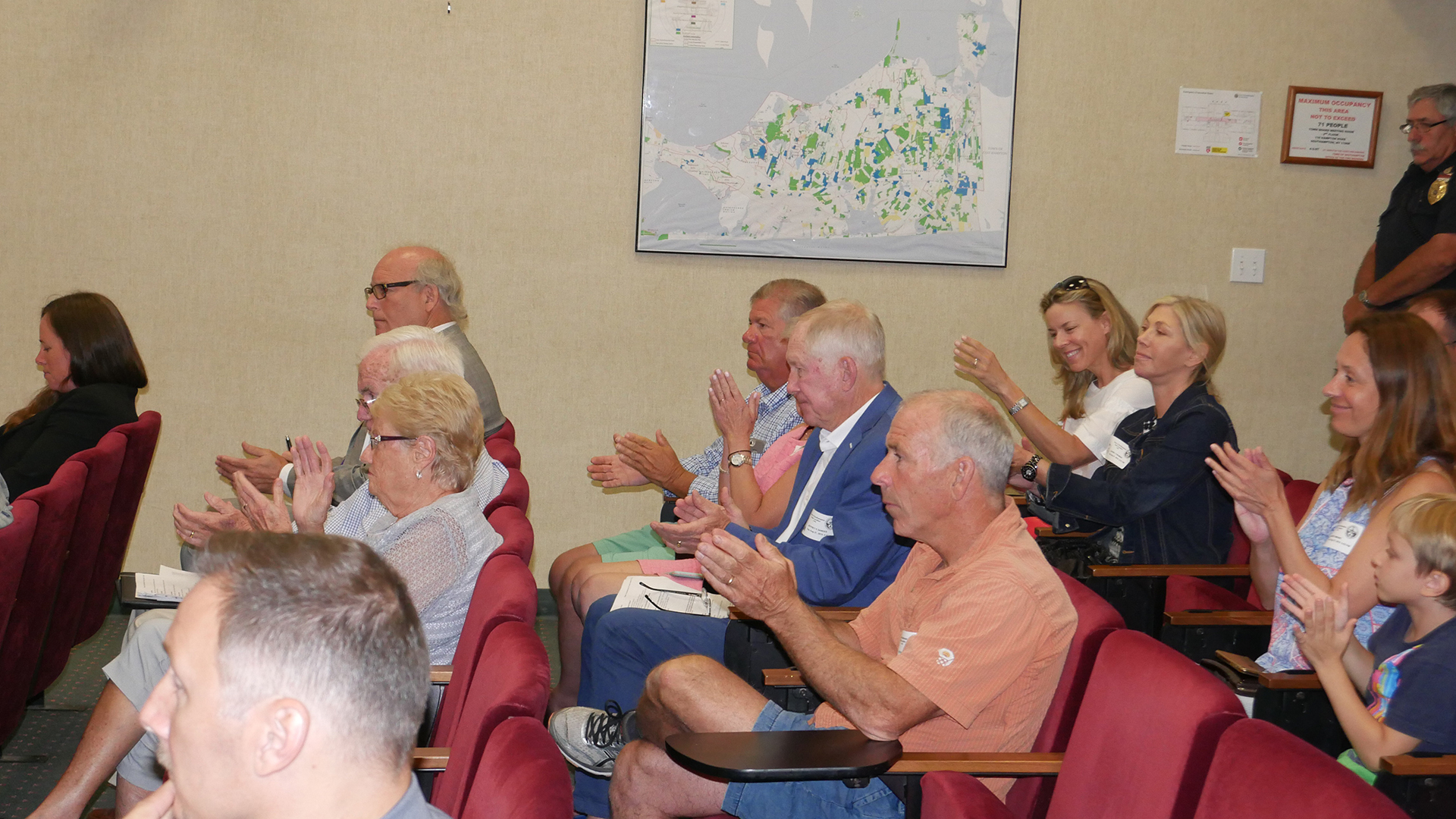Bond Approved For Noyac Utility District

A $420,000 bond approved by a Southampton Town Board super-majority allows Bay Point residents on Cliff Drive to be the first to take advantage of legislation allowing for a utility improvement district.
The cost of burying lines between nine PSEG utility poles will affect 18 Noyac property owners, and has been financed through a 20-year bond. Each homeowner in the utility district, delineated on the north by Harbor Drive, the east by Cliff Drive, the south by 53 Cliff Drive, and on the west by Long Beach Road, will pay approximately $1,421.19 the first year of the bond.
This is the first use of the state law introduced by Assemblyman Fred Thiele. It had passed in the Assembly and Senate without any nay votes.
“Historically, LIPA and PSEG-LI have rejected these underground projects because underground utility lines are more expensive to construct than above-ground lines,” Thiele said. “They also always say that they will bury utility lines in any case where the community is willing to pay the cost of undergrounding. The problem was that there was never a legal mechanism in state law whereby a community could finance the cost. Because I had received numerous inquiries about burying utility lines, I sponsored legislation with Senator Ken LaValle that would permit communities to create a special improvement district to pay for such projects.”
Multiple residents stood in support of the district at the August 27 Southampton Town Board meeting, where the resolution to approve the bond passed 4-1. Councilwomen Christine Preston Scalera and Julie Lofstad were the two votes against the formation of the utility improvement district back in March, but Preston Scalera ended up voting in favor of the bond.
“I don’t intend to be an obstructionist for the purpose of it,” she said. “Having said that, and that will be the reason that I support the bonding, I know it was said you’d try to assist the homeowners that were not able to afford what was being presented today in terms of payments, so I would hope, to the extent the law will allow, you will assist them in doing that.”
North Haven Mayor Jeff Sander, who owns property on Cliff Drive and spearheaded the effort, said 15 of 18 homeowners will be covering the cost to bury the lines between poles 19 and 29.
“There’s general public and homeowner benefit to this,” Sander said. “This strong public interest on the East End to bury power lines, and the completion of this project, may motivate others to extend the use of this law to other areas, like Long Beach.”
Thiele said residents in Montauk are pursuing a similar project. While the law passed in Southampton Town in 2017, it was approved a year prior in East Hampton. The legislation is completely voluntary, so districts are authorized only where the town and the local community agree that such a project is a good idea.
“The environment and the economy of the East End depend on maintaining its rural, scenic, and historic character. In some areas, utility lines can be a blight on the landscape,” Thiele said. “This legislation empowers communities to maintain and improve their quality of life by eliminating unsightly utility lines. It also makes our electric infrastructure less susceptible to storms as we deal with more extreme weather.”
Councilman John Bouvier, who sits on the Superstorm Sandy Task Force, said the infrastructure aspect was paramount in his decision to support the legislation.
“We’re in the 21st Century. We should not be worried about a storm taking out power wires for days or weeks at a time,” resident Stan Cohen said. “If a storm comes through, it may create some problems, but not where trees fall on wires. The idea of underground wiring is to protect against those problems. I think this is both a safety issue and a progressive issue for the future of America, but certainly the Town of Southampton.”
desiree@indyeastend.com



